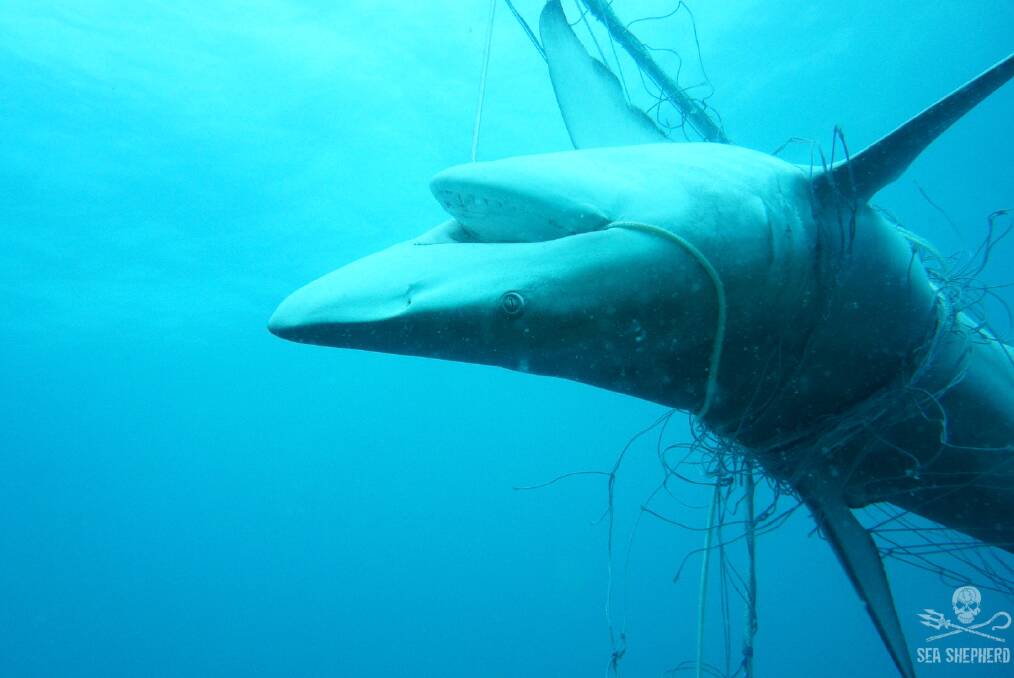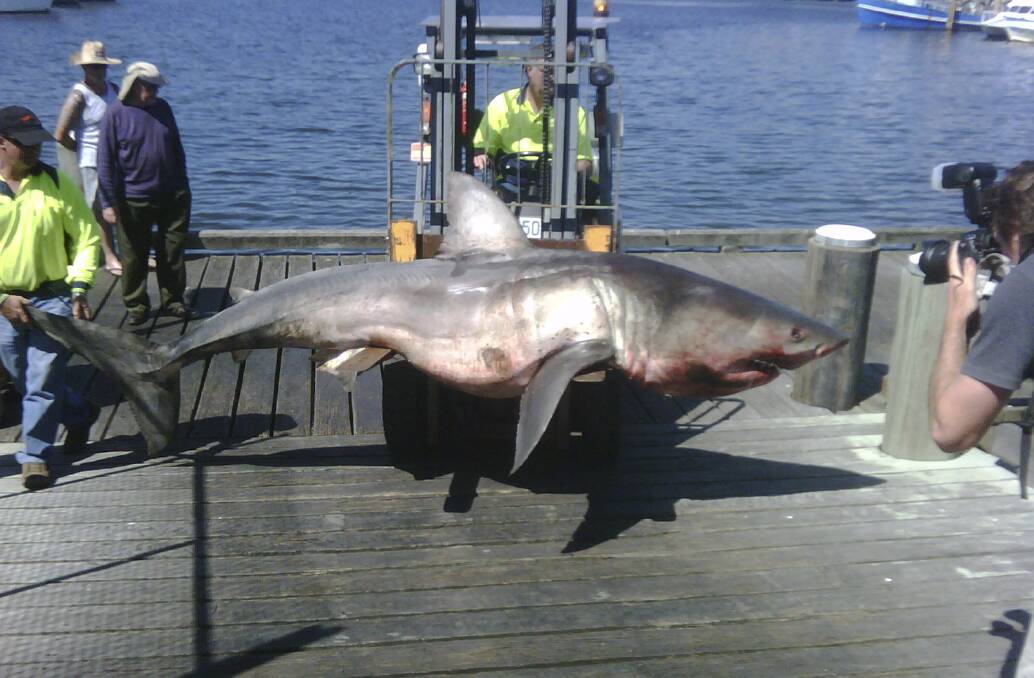
HUNTER and Central Coast shark nets continue to wreak havoc on marine life with hundreds of sea creatures including dolphins, turtles and rays killed in an attempt to keep the region’s beaches safe.
Subscribe now for unlimited access.
$0/
(min cost $0)
or signup to continue reading
The state government’s latest annual report shows about half of the 141 marine creatures caught off the region’s beaches last season died.
Sixty five sharks were caught, however, only 12 were targeted species.
Fourteen Hunter and Central Coast beaches between Stockton and Shelly Beach presently have shark nets installed.
In addition to by-catch, the netting program has been criticised because the nets are only 150 metres wide and not installed on a full-time basis.
The Hunter results mirror those from the recent north coast shark net trial that also captured only a small percentage of target predators.
Shark net statistics dating from 1950 show almost 20,000 animals have been caught in shark nets, including in the 51 nets off beaches in Sydney, Newcastle and Wollongong.
Many of the creatures caught are now endangered, such as grey nurse sharks.
Opponents of the program, administered by the Department of Primary Industries, argue the latest results are further evidence that it does little to project swimmers and surfers.
University of Newcastle Marine Biologist David Powter said shark nets created a false sense of security.
“A simple evaluation of this (data) shows nets to have a much reduced target shark catch, a significantly higher by-catch rate and a greater mortality rate all up,” Dr Powter said.
“The argument then is not whether bather protection measures are required or whether the environment is more important to people. It is simply that shark nets create a false sense of security whilst exacting a significant toll on the environment.”
READ MORE:
“Far more effective options exist that afford greater protection to swimmers and surfers, whilst minimising the negative impacts on marine life.”
The Greens have also called for an end to the controversial program.
“What is clear is that healthy oceans require healthy shark populations and the recent national CSIRO study has shown White Shark numbers remain low along the East Coast,” Greens environment spokesman Justin Field said.
“The government’s shark response has favoured lethal programs that kill hundreds of harmless and threatened marine animals with no clear public safety benefit.
“We’d be far better redirecting efforts to non-lethal community based programs including better resourcing volunteer and professional life guarding services, drone surveillance technology and community observer programs
A Department of Primary Industries spokeswoman said public safety was the government’s number one priority.
The shark meshing program has been in place since 1937, with only one fatal shark bite at a netted NSW beach during this time.
“We recognise that there is no one solution or silver bullet when it comes to mitigating the risks of sharks to beach users,” she said.

“Our aim has always been to minimise the risk to swimmers and surfers from shark attacks and the amount of by-catch caught.”
The spokeswoman said a range of technology was being used to reduce the impact on non-target species.
“Shark nets are fitted with a number of dolphin pingers and ‘whale alarms’ to deter the marine mammals from the netted area,” she said.
“Contractors are required to free all animals found alive in the nets where it is practical and safe to do so.”
Numbers of interactions with marine life fluctuate each year significantly, due to a number of factors, including natural variability.
By contrast, support for so-called SMART drumlines is mounting.
The drumlines use a baited hook attached to a relay unit which alerts shore-based teams when the hook is engaged. They can then respond, determine what has been captured and release it in a short space of time.
If it is a target shark, it can also be tagged.
“It appears that target sharks dealt with in this way, leave the area in a very short space of time and stay away for an extended period, a result that is good for the environment and risk minimisation” Dr Powter said.
“Additionally, they have a low by-catch rate and a very high survival rate.”
Between December 2016 and May 2017 shark nets were trialled at several locations on the North Coast, with six target sharks (three dead) and 247 non-target animals (130 dead) captured with 52.6 per cent by-catch mortality.
During the same period, a SMART drumline trial captured 36 target sharks (1 dead) and 3 non-target (zero dead) animals – zero per cent by-catch mortality and 97.2 per cent target species survival.
Mr Field said the SMART drumline program, while a better option that conventional netting, was still problematic.
“There is clear scientific value from the tagging program associated with the SMART drumline program but there is a lack of evidence about the long-term impact of the catch and release program on the important animals,” he said.
“There is also no clear community safety argument in favour of ongoing use.”
The state government removed the six nets off the north-east coast around Ballina this month.
It is yet to decide whether a third year of trials should proceed next summer.
"The results of the net trial are being reviewed alongside feedback from the community," a spokeswoman for Fisheries Minister Niall Blair said. "This information will help inform the NSW government’s future decisions on shark nets."

